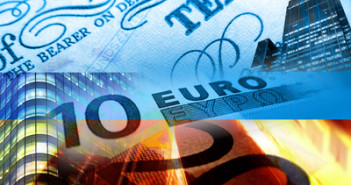EUR/USD continues to point downward, as the pair tests the 1.32 line. The euro has dropped sharply since Wednesday, as the US Federal Reserve announced that it plans to scale down the current QE program sometime in 2013. It is a quiet start to the week, with just two releases on Monday. German Ifo Business Climate came in just shy of the estimate. Belgium NBB Business Climate will be released later today. There are no US releases scheduled for Monday.
Here is a quick update on the technical situation, indicators, and market sentiment that moves euro/dollar.
EUR/USD Technical
- Asian session: Euro/dollar dropped below the 1.31 line, touching a low of 1.3090, before consolidating at 1.3099. In the European session, the pair has edged higher.
Current range: 1.31 – 1.3160.
Further levels in both directions:Â 
- Below: 1.31, 1.3050, 1.30, 1.2940, 1.2890, 1.2840, 1.28, 1.2750 and 1.27.
- Above: 1.3160, 1.32, 1.3255, 1.3350, 1.34, 1.3434, 1.3480
- On the downside, the pair is testing the 1.31 line. 1.3050 is next.
- 1.3160 is providing weak resistance. This is followed by 1.32.
Euro trading close to 1.31 line – click on the graph to enlarge.
EUR/USD Fundamentals
- 8:00 German Ifo Business Climate. Exp. 106.0 points. Actual 105.9 points.
- 13:00 Belgium NBB Business Climate. Exp. -11.1 points.
For more events and lines, see the EUR/USD
EUR/USD Sentiment
- Dollar Jumps as Fed announces plans to taper QE: There was plenty of action in the currency markets last week , as the US dollar was broadly stronger last week, following remarks from the Federal Reserve that it plans to taper QE. The Fed said that the current purchase levels of $85 billion will remain in place, but if the economy continues to improve, the program would be scaled down in 2013, and could be terminated in 2014. Federal Reserve chair Bernard Bernanke has thus given the markets notice – if US growth moves up and unemployment moves down, the Fed will wind down QE, which involves $85 billion in asset purchases every month. Since QE is dollar-negative, the Fed’s comments about reducing QE boosted the dollar against the major currencies. The euro was walloped after the news, and has lost close to three cents since the middle of last week.
- German data raises concern: Germany has long been considered the locomotive of Europe, but the number one economy in the Europe has been struggling. Last week, German Manufacturing PMI missed the estimate, and remained under the 50-point level, indicating contraction. German PPI also disappointed, posting a decline of -0.3%. On Monday, German Ifo Business Climate, a key indicator, came in at 105.9 points, just short of the estimate of 106.0. These readings cannot be considered confidence builders by any stretch of the imagination. If Germany does not lead the way, the Eurozone will have an even tougher recover from the present recession.
- US numbers point up and down: The markets had plenty of material to work with on Thursday, as the US released three key events. Unemployment Claims disappointed, coming in at 354 thousand, well above the estimate of 343 thousand. There was better news as Existing Home Sales improved nicely to 5.18 million, easily surpassing the estimate of 5.01 million. The Philly Fed Manufacturing Index, which has been erratic, shot up to 12.5 points from -5.2 points. This blew past the estimate of -0.6 points, and was the key indicator’s best showing since March 2012. We continue to see ups and downs from US economic indicators, making it difficult to gauge the extent of the US recovery.
- Draghi open to unconventional measures: ECB President Mario Draghi reiterated in a speech last week that the ECB is open to “non-standard†monetary tools, and would not hesitate to use such measures if needed. Draghi hinted recently that a negative deposit rate was on the table, and the markets reacted negatively, as the euro took a hit. Other measures include long-term lending operations and modifying collateral requirements. Draghi is widely credited for his role in keeping the struggling Eurozone intact and afloat in difficult times, but still has his work cut out for him, as the Eurozone is now mired in its longest recession since the zone was created in 1999. If the ECB does take steps to introduce negative rates or other non-standard measures, we can expect a sharp reaction from the currency markets.
- High unemployment, low inflation hampering Eurozone growth: The Eurozone economy continues to sputter, and a large part of the problem is low inflation and high unemployment. Inflation numbers continue remain well below the ECB’s target of 2%. The ECB recently lowered interest rates to 0.50%, hoping to raise inflation and increase economic activity, but so far we haven’t seen much improvement in these areas. Unemployment in the Eurozone has risen to 12%, and is much higher among younger Europeans and in the southern countries, such as Greece and Spain. The persistent unemployment crisis has led policymakers to declare that the Eurozone unity faces more danger from a social breakdown than from any market forces. With the Eurozone mired in its longest recession ever, politicians and policymakers will have to find a way to tackle the severe growth and unemployment problems facing the Eurozone if it is to remain intact.



